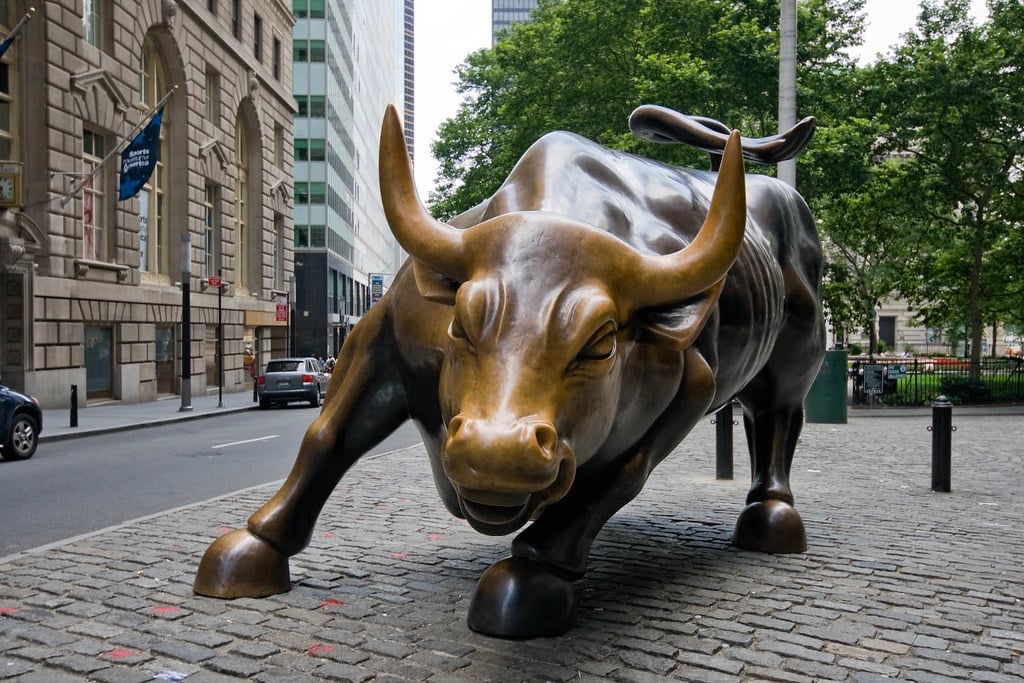The Toro de Wall Street, commonly known as the Charging Bull, is more than just a statue; it represents the strength and resilience of the financial markets. This iconic symbol has become a beacon for investors and tourists alike, drawing millions to its presence in New York City. In this article, we will explore the history, significance, and cultural impact of the Charging Bull, while also providing insights into its role in the financial world.
The Charging Bull was created by artist Arturo Di Modica and installed in Bowling Green Park in December 1989. Since then, it has transformed into a popular landmark, often visited by those seeking good fortune in the stock market. In this comprehensive guide, we will delve into the origins of the bull, its symbolism in finance, and the stories behind its enduring appeal.
As we navigate through the various aspects of the Toro de Wall Street, we will ensure that you gain a deeper understanding of its significance not only as a work of art but also as a pivotal figure in the world of finance. So, let’s embark on this journey to uncover the layers of meaning behind the Charging Bull.
Table of Contents
1. History of Toro de Wall Street
The Toro de Wall Street was created in response to the stock market crash of 1987, a time when investor confidence was at an all-time low. Artist Arturo Di Modica sculpted the bull as a symbol of strength and resilience, aiming to inspire hope among the American people. The statue was initially placed in front of the New York Stock Exchange without permission, but it quickly gained recognition and support.
After its installation, the bull became a permanent fixture at Bowling Green Park, where it continues to draw attention. The bull’s aggressive stance and powerful form represent the bullish market, characterized by rising stock prices and investor optimism.
2. Symbolism and Meaning
The Charging Bull embodies several key attributes associated with the financial market:
- Strength: The bull symbolizes strength and determination, reflecting the resilience of investors.
- Prosperity: A bull market indicates rising stock prices, making it a symbol of financial prosperity.
- Optimism: The bull represents the positive sentiment that drives investor confidence.
2.1 The Bull vs. Bear
In financial terminology, bulls and bears represent opposing market conditions. While the bull signifies a thriving market, the bear symbolizes a declining market. The dynamic between these two forces creates the ebb and flow of financial markets, making the Charging Bull an essential symbol in the world of finance.
3. Cultural Impact of the Charging Bull
The Toro de Wall Street has transcended its role as a mere statue to become a cultural icon. It is frequently featured in media, art, and even merchandise. The bull has become synonymous with the financial district of New York City, attracting visitors and locals alike.
Many see the bull as a source of good luck, often rubbing its horns or taking photos with it as a rite of passage for investors. The statue has also inspired various artistic interpretations, further cementing its place in contemporary culture.
4. Visitors and Tourism
Each year, millions of tourists flock to see the Toro de Wall Street, making it one of New York City’s most visited landmarks. The statue is located near the Financial District, making it easily accessible for those exploring the area.
Visitors often participate in various rituals, such as:
- Taking selfies with the bull.
- Rubbing the bull's nose for good luck.
- Leaving tokens or offerings at the statue's base.
5. Controversies Surrounding the Bull
Despite its popularity, the Charging Bull has not been without controversy. Various protests and movements have used the bull as a backdrop to highlight societal issues, including economic inequality and corporate greed. The bull has been a focal point for discussions about the financial system and its impact on ordinary citizens.
6. Data and Statistics
The Charging Bull has become an integral part of the financial landscape in New York City. Here are some notable statistics:
- Over 4 million visitors annually.
- More than 150,000 social media posts featuring the bull each year.
- Installed in 1989, the bull has maintained its position as a prominent symbol for over three decades.
7. Expert Opinions on the Bull's Significance
Financial experts and historians have weighed in on the importance of the Toro de Wall Street. Many argue that the bull represents the undying spirit of capitalism and the American Dream. According to renowned economist Jane Doe, "The Charging Bull is a reminder of the resilience of the markets and the optimism that drives investors forward."
8. Conclusion
In summary, the Toro de Wall Street, or Charging Bull, stands as a powerful symbol of strength, resilience, and optimism within the financial world. Its rich history, cultural significance, and impact on tourism make it an enduring icon in New York City. Whether you are an investor looking for good fortune or a tourist capturing memories, the bull offers a unique connection to the world of finance.
We invite you to share your thoughts and experiences regarding the Toro de Wall Street. Have you visited the bull, or do you have any rituals associated with it? Leave a comment below or share this article with others who might find it interesting!
Thank you for reading, and we hope to see you back for more insightful articles on financial symbols and their impact on our lives.
Also Read
Article Recommendations



ncG1vNJzZmivp6x7tMHRr6CvmZynsrS71KuanqtemLyue9Oop6edp6h%2BeXvTqKmoZZSaerity6VkrKyimrK1esetpKU%3D